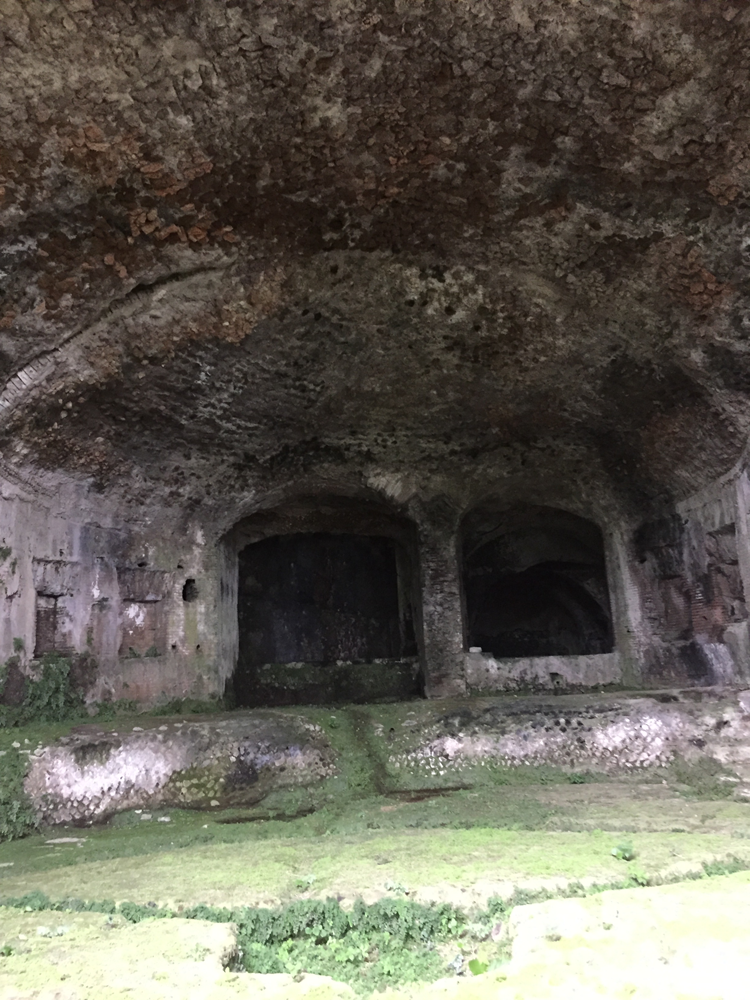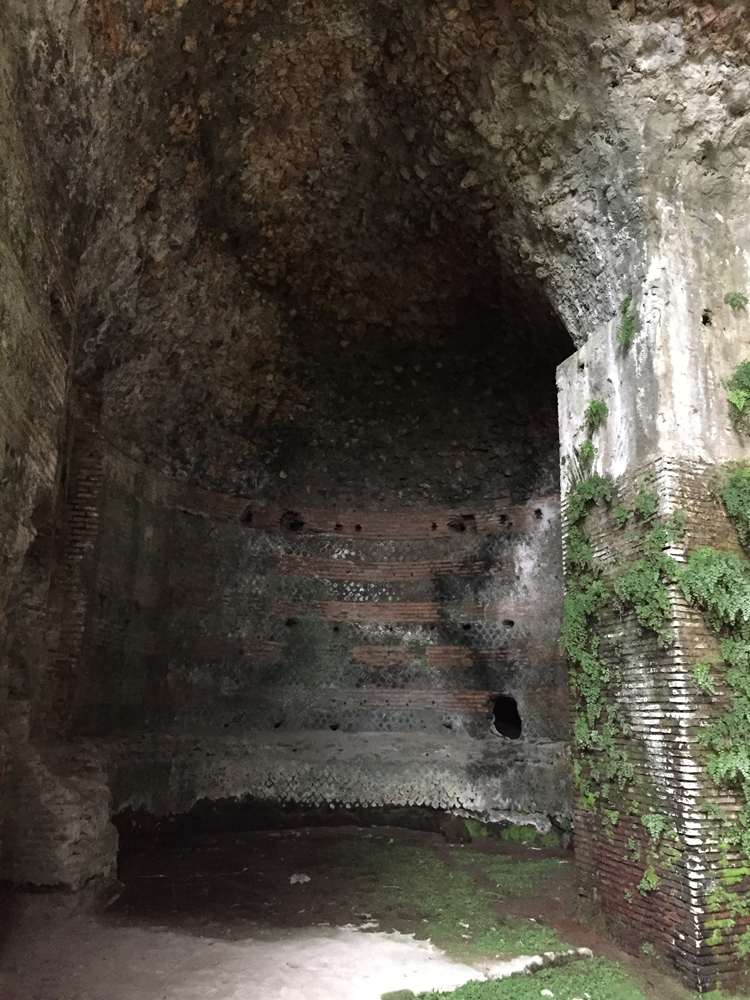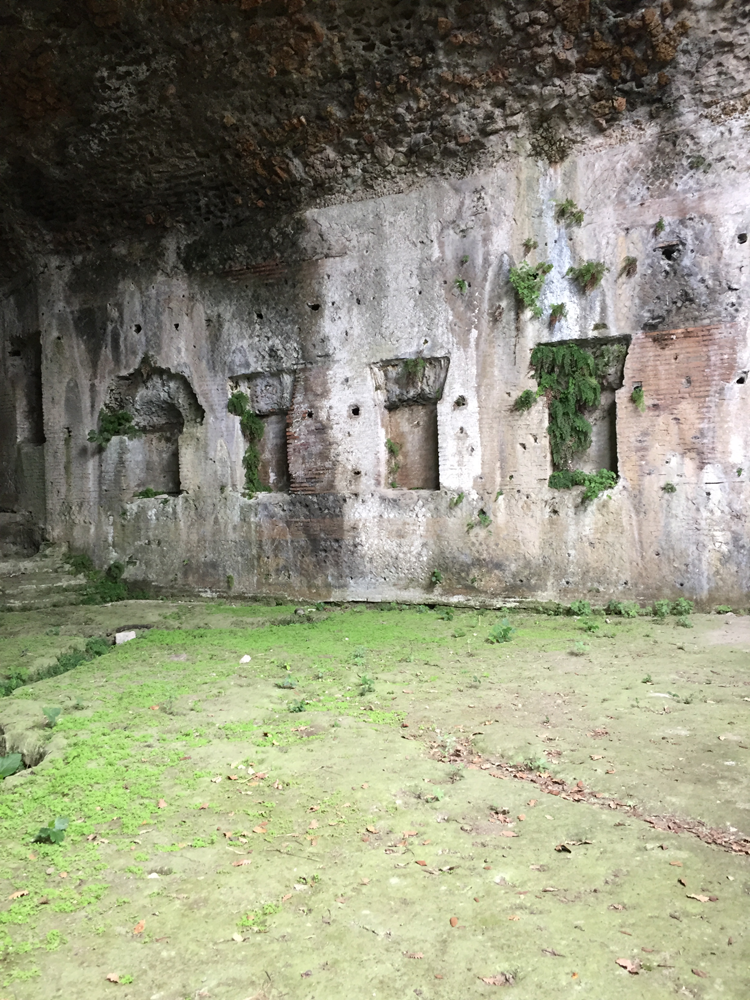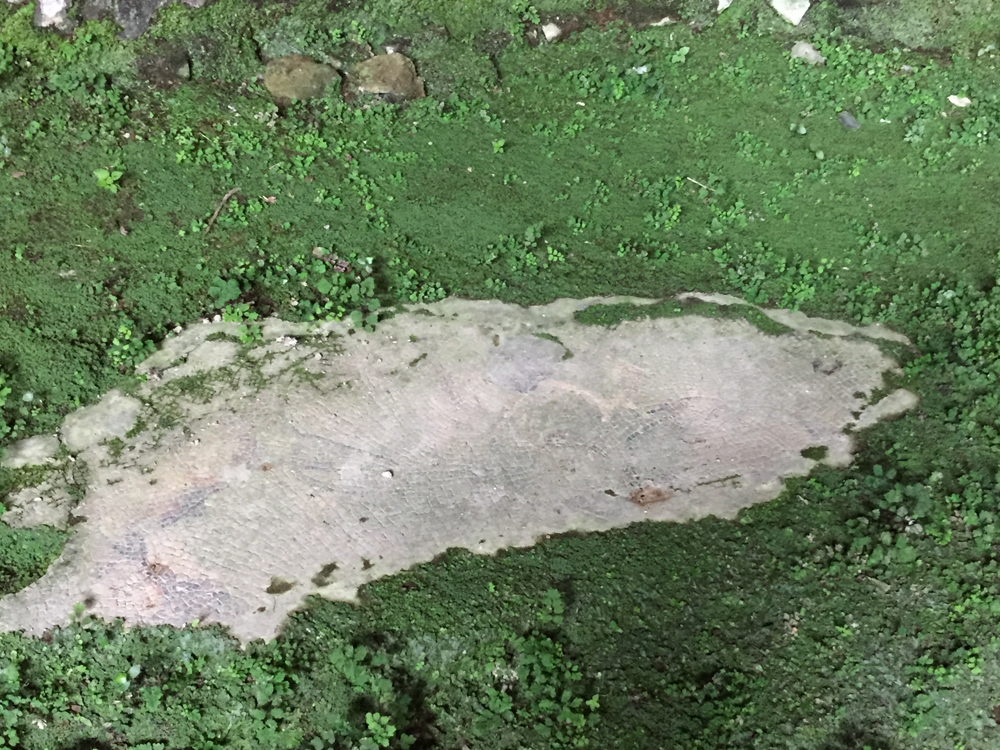Located only a few meters off the shore of Lake Albano in Castel Gandolfo, lies the Bergantino Nymphaeum, also known as the Baths of Diana. This cave dates back to 300 BC but was enlarged and incorporated into Domitian’s imperial villa in the first century, and later used by Pope Alexander VII. Bergantino was rediscovered in the mid-19th century during excavations.




The name most likely derives from “Brigantino”, a type of boat that was used by Domitian in naval battle simulations on the lake and stored in the nymphaeum. Originally a pozzolan quarry, it had a few rooms; below a photo of one of the side rooms where the boats may have been stored.




Taking on a different function than that of the Doric Nymphaeum, this grotto was designed to
be viewed from the outside in; a show of cascading water and fountains with a mythical theme.




The largest room, or also known as the central hall, contained most of the decoration and was the focal point. It held statues of Ulysses, Polyphemus and Scylla and included a circular pool in the center, along with shelves of cascading water and fountains.




The floor once was covered by a huge mosaic depicting sea creatures. The walls were decorated with marble slabs and traces of painting were found during the excavations.
Today unfortunately there are only small sections of the floor mosaic remaining, as most of the décor has been erased with time. Various parts of sculptural groups that were found are now kept at the Pontifical Palace in Castel Gandolfo.
The pumice stone ceiling is still intact; the stones were originally installed to further enhance the look of the natural grotto.


A highlight of the visit was hearing stories of the fickle Emperor and his use of the nymphaeum: He would have his servants tie his boat to theirs with a long cord in order not to hear the oars hitting and splashing the water as they rowed him out to the lake. The nymphaea are generally closed to the public and can only be visited by contacting the Soprintendenza Archeologia, Belle Arti e Paesaggio of Roma. Guided tours are organized once every 3 months or so and are advertised by the , the Municipality of Castel Gandolfo and/or local archaeological associations such as These tours are usually free and in Italian language.
The pumice stone ceiling is still intact; the stones were originally installed to further enhance the look of the natural grotto. photo below


A highlight of the visit was hearing stories of the fickle Emperor and his use of the nymphaeum: He would have his servants tie his boat to theirs with a long cord in order not to hear the oars hitting and splashing the water as they rowed him out to the lake.
How to visit:
The nymphaea are generally closed to the public and can only be visited by contacting the Soprintendenza Archeologia, Belle Arti e Paesaggio of Roma. Guided tours are organized once every 3 months or so and are advertised by the Soprintendenza ABAP-RM-MET, the Municipality of Castel Gandolfo and/or local archaeological associations such as GAALNA
These tours are usually free and in Italian language.

